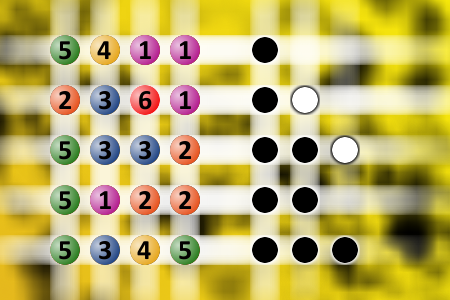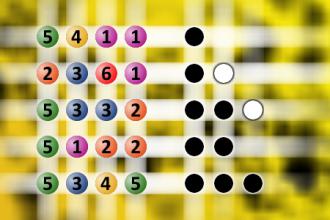What a winning combination?
The computer chose a secret code (sequence of 4 digits from 1 to 6). Your goal is to find that code. Black circles indicate the number of hits on the right spot. White circles indicate the number of hits on the wrong spot.Correct answers: 0
#brainteasers #mastermind

Elephant Jokes 11
What do you call an elephant with a machine gun?
Sir!
What can an elephant with a machine gun call you?
Anything he likes!
What do you call an elephant that's small and pink?
A failure!
What is stronger an elephant or a snail?
A snail, because it carries it's house, an elephant just carries its trunk!
What do you give an elephant with big feet?
Plenty of room!
Tarzan was tired when he came home.
"What have you been doing", asked Jane.
"Chasing a herd of elephants on vines"
"Really?", said Jane. "I thought elephants stayed on the ground!"
What would happen if an elephant sat in front of you at the movies?
You would miss most of the film!
What steps would you take if you were being chased by an elephant?
Big ones!
What do you find in an elephants graveyard?
Elephantoms!
Why do elephants have wrinkly ankes?
Because their shoes are too tight!

